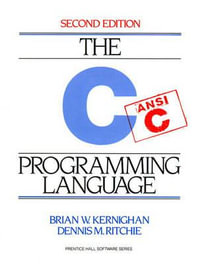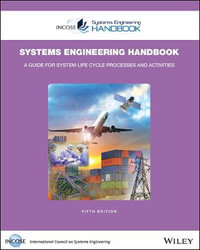| Preface | p. ix |
| The Authors | p. xi |
| Introduction | p. 1 |
| Ad Hoc Networks: A Preamble | p. 1 |
| Characteristics of Ad Hoc Networks | p. 2 |
| Some Prospective Usages of Ad Hoc Networks | p. 3 |
| Some Research Challenges | p. 5 |
| Use of Smart Antennas in Ad Hoc Networks | p. 5 |
| Media Access Control | p. 6 |
| Routing | p. 6 |
| Power Conservation | p. 7 |
| Security | p. 8 |
| Performance Evaluation Techniques | p. 8 |
| Organization of the Book | p. 9 |
| References | p. 10 |
| The Issues and Challenges in Designing MAC and Routing Protocols | p. 13 |
| Media Access Control Techniques | p. 13 |
| MAC Protocols with Omni-Directional Antennas | p. 15 |
| MAC Protocols with Directional Antennas | p. 19 |
| oRTS/oCTS-Based DMAC | p. 21 |
| DRTS/oCTS-Based DMAC | p. 21 |
| DRTS/DCTS-Based DMAC | p. 21 |
| Other DMAC Protocols | p. 22 |
| Power-Controlled MAC | p. 24 |
| Power-Control Schemes Using Omni-Directional Antennas | p. 24 |
| Power-Control Schemes Using Directional Antennas | p. 25 |
| Routing Protocols in Ad Hoc Wireless Networks | p. 27 |
| Routing Protocols Using Omni-Directional Antennas | p. 27 |
| Reactive Routing Protocols | p. 27 |
| Proactive Routing Protocols | p. 35 |
| Routing Protocols Using Directional Antennas | p. 38 |
| Performance Evaluation Techniques | p. 41 |
| Simulation-Based Evaluation | p. 42 |
| Comparison of Routing Performance | p. 42 |
| Comparison of MAC Performance | p. 44 |
| Evaluation Using a Testbed | p. 45 |
| References | p. 48 |
| Location Tracking and Media Access Control Using Smart Antennas | p. 55 |
| Introduction | p. 55 |
| Introduction to Smart Antennas | p. 57 |
| Features of Smart Antennas | p. 58 |
| Classification of Smart Antennas | p. 59 |
| ESPAR: A Smart Antenna for Wireless Ad Hoc Networks | p. 59 |
| Issues of Smart Antennas in the Context of Wireless Ad Hoc Networks | p. 64 |
| Location-Tracking Mechanisms for Neighborhood Discovery | p. 65 |
| Directional Media Access Control Protocols | p. 66 |
| A Few Assumptions and the Rationales | p. 68 |
| Performance Evaluation | p. 71 |
| Simulation Environment | p. 71 |
| Results | p. 72 |
| Discussion | p. 76 |
| References | p. 76 |
| Location Tracking and Location Estimation of Nodes in Ad Hoc Networks: A Testbed Implementation | p. 79 |
| Introduction | p. 79 |
| Location Tracking and Neighborhood Discovery | p. 82 |
| Formation of the NLST (Neighborhood Link State Table) | p. 82 |
| Formation of the AST (Angle Signal Table) | p. 83 |
| Location Estimation | p. 84 |
| Basic Idea | p. 84 |
| Location Estimation by a Node Using a Pair of Reference Nodes | p. 86 |
| Synchronization of an Antenna by a Nonprimary Reference Node | p. 87 |
| Formation of the Post-Synchronization Mapping (PM) Table | p. 89 |
| Estimating Location of a Node Multi-Hop Away from Reference Nodes | p. 90 |
| Implementation Results | p. 91 |
| Two-Node Setting: Evaluating Location Tracking | p. 91 |
| Five-Node Setting: Single-Hop Location Estimations with Two Reference Nodes | p. 93 |
| Five-Node Setting: Multi-Hop Location Estimations with Secondary Reference | p. 95 |
| Error in Location Estimation: A Simulation Study | p. 98 |
| Discussion | p. 99 |
| References | p. 100 |
| A Routing Strategy for Effective Load Balancing Using Smart Antennas | p. 101 |
| Introduction | p. 101 |
| System Description | p. 105 |
| Some Important Definitions | p. 105 |
| Network Awareness | p. 109 |
| Formation of AST and NANL | p. 110 |
| Formation of ANL | p. 111 |
| Formation of GLST | p. 112 |
| Network-Aware Routing with Maximally Zone-Disjoint Shortest Path | p. 113 |
| Maximally Zone-Disjoint Shortest-Path Routing | p. 114 |
| Finding the Maximally Zone-Disjoint Shortest Path: An Analysis | p. 116 |
| Adaptive Route Selection | p. 118 |
| Maximally Zone-Disjoint Multipath Routing | p. 119 |
| Multipath Routing Using Omni-Directional and Directional Antennas | p. 119 |
| Selecting Maximally Zone-Disjoint Multipath Routes | p. 123 |
| Performance Evaluation | p. 124 |
| Simulation Environment | p. 124 |
| Impact of Overhead | p. 124 |
| Evaluation under Static Scenarios | p. 128 |
| Evaluation under Mobile Scenarios | p. 130 |
| Discussion | p. 132 |
| References | p. 133 |
| Priority-Based QoS Routing Protocols Using Smart Antennas | p. 135 |
| Introduction | p. 135 |
| A Few Related Definitions | p. 138 |
| Priority-Based QoS Routing Using Zone Reservation | p. 139 |
| Zone Reservation and Route Computation by High-Priority Flows | p. 140 |
| Route Computation and Adaptive Call Blocking by Low-Priority Flows | p. 141 |
| Route Computation without Call Blocking | p. 141 |
| Route Computation with Call Blocking | p. 142 |
| Performance Evaluation | p. 143 |
| Effectiveness of Zone-Reservation Protocol | p. 144 |
| Effectiveness of the Call-Blocking Scheme | p. 145 |
| Priority-Based Flow-Rate Control for QoS Provisioning Using Feedback Control | p. 150 |
| A Control-Theoretic Approach | p. 154 |
| Some Preliminaries on Proportional-Integral-Derivative (PID) Control | p. 154 |
| Priority-Based Flow Control Strategies Using a PID Controller | p. 155 |
| Priority-Based Flow-Control Scheme Using Directional Antennas | p. 159 |
| Detecting and Measuring High-Priority Flow Rates by Other Flows | p. 159 |
| Feedback Control of Low-Priority Flow Rate | p. 163 |
| Performance Evaluation | p. 164 |
| Performance of Low-Priority-Flow-Controller (LPC) | p. 165 |
| Evaluating the System Performance in Random Topology | p. 170 |
| Service Differentiation in Multi-Hop Intervehicular Communication | p. 173 |
| Routing in an Unbounded Network | p. 173 |
| Bounded versus Unbounded Networks | p. 174 |
| Application-Dependent Route Discovery Process | p. 175 |
| Implementation of Prioritized Routing Scheme in IVC Scenario | p. 176 |
| Route Computation and Zone Reservation by High-Priority Flows | p. 176 |
| Route Computation and Adaptive Call Blocking by Low-Priority Flows | p. 177 |
| Discussion | p. 178 |
| References | p. 180 |
| Conclusion | p. 183 |
| Index | p. 187 |
| Table of Contents provided by Ingram. All Rights Reserved. |
























